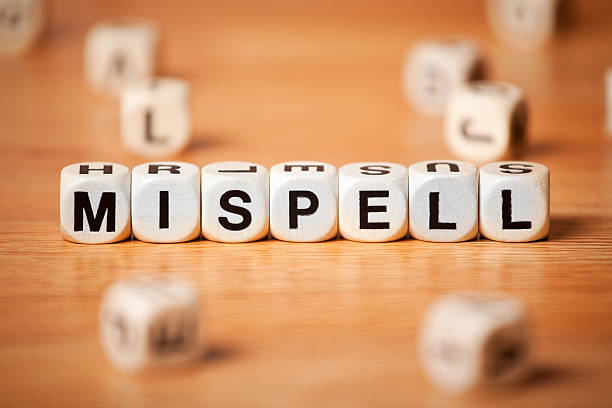Start-ups often opt for intentionally misspelled versions of well-known terms (e.g., Lyft) rather than using grammatically correct ones (e.g., Lift) as their brand names. This naming strategy usually involves adding, omitting, or substituting letters.
Examples include:
- Create becomes Kreate.
- Essential Element becomes Essntl Elmnt.
- Fresh becomes Phresh.
A recent scientific study, titled "Choosing the Best Spelling: Consumer Response to Unconventionally Spelled Brand Names" published in the Journal of Marketing by the American Marketing Association, now reveals that this strategy can backfire. Ultimately, the study recommends that companies consider using the correct spelling whenever possible. We've taken a look at the study summary provided by Ariyh.com.
Creativity and Attention vs. Distrust and Less Sales
This naming strategy trend has persisted for some time due to two key reasons:
- A higher likelihood of securing an available domain name and avoiding third-party trademark conflicts.
- Start-ups intentionally choose unconventional spellings to positively influence consumer perception, garner attention, and stand out.
The study aimed to understand how consumers react to misspelled brand names and their likelihood of trusting and buying products from such brands. The results of eight experiments revealed:
- a 13.6% higher preference for a drink called "Clear" over "Klear" (61.6% vs. 48%).
- a 19.5% decrease in the likelihood of downloading an app called "Daily Gainz" compared to "Daily Gains."
- a 33.6% increase in the likelihood of purchasing a soft drink named "Fresh" over "Phresh."
However, this effect diminished or disappeared when:
- Consumers expected a memorable experience associated with the purchase (e.g., socializing with friends or a team-building event).
- The company had a genuine reason for the unconventional name (e.g., invented by a group or corresponding to the founders' surnames).
The decision to prioritize creativity and rapid attention-grabbing versus potential sales loss and distrust becomes crucial when naming a brand.
Why We Are Skeptical of Misspelled Names
The study provides an explanation for the skepticism surrounding misspelled names. When a brand does something unexpected, consumers tend to make assumptions about the brand's motivations. Unusual spellings are often seen as marketing tactics to appear trendy, which can come across as disingenuous and lead to negative reactions and reduced purchase intent.
Limitations and Considerations
Like any scientific study, this one has limitations and considerations:
- Respondents were presented with either unknown or invented brands during the tests, leaving questions about the impact on well-known brands like Lyft or Tumblr.
- The findings may not apply to renaming existing well-known brands.
- The study focused on English brand names and native speakers' reactions (America, England, Ireland, Australia). Results may differ in other languages, such as German, where misspellings like "Kola" for "Cola" are common and may not raise suspicion.
- The possibility of conducting similar studies in multiple languages to assess cross-cultural reactions is intriguing.
Brands That Embrace Misspelled Names
While the trend of misspelling brand names peaked in 2021, especially among start-ups, it has since been replaced by names inspired by the animal or food sector (e.g., Squirrel, Carrot). However, some former start-ups that are now globally recognized brands, like Twitter/X and Instagram, initially adopted misspelled names. For instance, Twitter/X began with the domain twttr.com but later acquired twitter.com for global recognition. Flickr also redirected the correct spelling domain flicker.com to flickr.com.
Here's a selection of brands intentionally using misspelled names:
Cheez
Layzr
rooom
nakt
voize
bliq
UNKNWN
Flickr
Tumblr
wrstbhvr
tiramizoo
vimeo
Domain Hacks as a Creative Naming Method
Start-ups also employ domain hacks creatively, selecting domain extensions that complement their brand names. Examples include instagr.am and bit.ly. However, many eventually adopt the .com variant after reaching a certain level of success.
Tips for Choosing a Name
What's the experts view on misspelling names? Global brand experts like Unilever and P&G tend to avoid misspelled brand names. The recommendation, both from a branding and domain perspective, is to choose the correct spelling as the brand and domain name.
Simplicity is key for brand and domain names. Follow the KISS formula: Keep it simple and stupid. Choose short and easily memorable names. For a selection of high-quality, descriptive domains, explore our domain marketplace and broker team offerings. If the desired name should already be taken, our broker team can help you to get it.
If opting for a creative solution, ensure the correct spelling is available as a domain and consider including typo variants in the portfolio.
Another recommendation by brand experts: Brands seeking warmth, empathy, or trustworthiness may benefit from using female names like Mona, Nia, or Alexa. For those who want to delve deeper into this topic to learn why the impact of male and female brand names is so different, this post is recommended.
